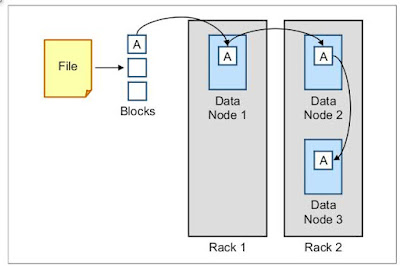Unlocking Big Data Potential: The Role of Data Lakes in Architecture
Introduction:
Have you ever wondered how companies manage to store and analyze the vast amounts of data they collect daily? According to IDC, the global datasphere is expected to reach 175 zettabytes by 2025. This staggering amount highlights the importance of efficient data storage solutions. Enter data lakes—a concept that has revolutionized the way organizations handle big data. Data lakes act as centralized repositories that store structured, semi-structured, and unstructured data at scale. This article explores the pivotal role data lakes play in big data architecture, providing insights into their benefits and practical implementation.
Body:
Section 1: Background and Context
Understanding Data Lakes
A data lake is a storage system that holds vast amounts of raw data in its native format until it is needed. Unlike traditional databases that store data in predefined schemas, data lakes enable organizations to store diverse types of data—ranging from text and images to video and sensor data—without the need for immediate structuring. This flexibility is critical in the era of big data, where the variety, volume, and velocity of data continue to grow exponentially.
Evolution of Data Storage Solutions
Historically, data storage solutions were limited to relational databases and data warehouses, which required data to be structured and processed before storage. With the advent of big data, these traditional solutions began to show limitations in handling large-scale, diverse datasets efficiently. Data lakes emerged as a solution to these challenges, offering scalable and cost-effective storage that accommodates all types of data.
Section 2: Key Points of Data Lakes
Benefits of Data Lakes
Scalability and Flexibility
Data lakes provide unparalleled scalability, allowing organizations to store large volumes of data without the constraints of traditional databases. This scalability is coupled with flexibility, as data lakes can accommodate various data types and formats, making them ideal for big data applications.
Cost-Effectiveness
Compared to data warehouses, data lakes are often more cost-effective. They utilize low-cost storage solutions, such as cloud-based object storage, to keep operational costs down. This makes it feasible for organizations to store vast amounts of data without incurring prohibitive expenses.
Enhanced Analytics
Data lakes enable advanced analytics by providing access to raw data. Analysts can apply machine learning algorithms and perform complex queries directly on the data lake, deriving insights that would be difficult to achieve with pre-processed data. According to a report by Gartner, organizations that utilize data lakes for analytics can reduce the time to insights by up to 30%.
Challenges and Considerations
Data Governance
One of the primary challenges of managing a data lake is ensuring proper data governance. Without structured schemas, data lakes can become disorganized and difficult to manage. Implementing robust data governance policies and metadata management is essential to maintain the integrity and usability of the data.
Security Concerns
Storing vast amounts of raw data in a centralized repository raises significant security concerns. Organizations must implement stringent security measures to protect sensitive information from unauthorized access and breaches. Encryption, access control, and regular audits are critical components of data lake security.
Section 3: Practical Tips and Examples
Implementing a Data Lake
Choosing the Right Platform
Selecting the right data lake platform is crucial for successful implementation. Popular platforms include Amazon S3, Azure Data Lake, and Google Cloud Storage. These cloud-based solutions offer scalable storage and integrated tools for data management and analytics.
Data Ingestion and Processing
Efficient data ingestion processes are vital for populating the data lake. Utilizing ETL (Extract, Transform, Load) tools can streamline the process of importing data from various sources. It’s also important to establish data processing pipelines that clean and organize the data for analysis.
Leveraging Analytics Tools
Integrate analytics tools such as Apache Spark, Hadoop, and machine learning frameworks to derive insights from the data lake. These tools can process large datasets and perform complex queries, enabling advanced analytics and predictive modeling.
Case Studies and Success Stories
Case Study: Retail Industry
A major retailer implemented a data lake to consolidate customer data from various sources, including social media, transaction records, and web interactions. By leveraging machine learning algorithms on the data lake, the retailer was able to identify purchasing trends and personalize marketing campaigns, resulting in a 20% increase in sales.
Case Study: Healthcare Sector
A healthcare provider utilized a data lake to store and analyze patient data from electronic health records, wearable devices, and medical imaging. This comprehensive data repository enabled the provider to improve patient care through predictive analytics, identifying potential health issues before they became critical.
Conclusion:
Data lakes have become an integral component of big data architecture, offering scalable and flexible storage solutions that accommodate diverse datasets. While they present challenges in terms of data governance and security, the benefits of enhanced analytics and cost-effectiveness make them a valuable asset for organizations. By understanding the role of data lakes and implementing best practices, businesses can unlock the full potential of their data, driving innovation and informed decision-making.




Comments
Post a Comment